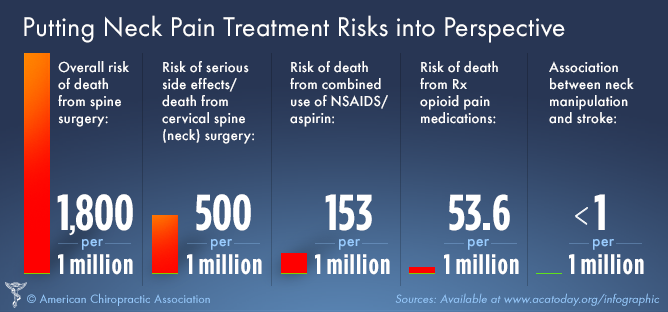If you're experiencing back pain, your body could be trying to inform you something more than just pain. The way your back really feels can offer important hints regarding your general health. Recognizing the particular type of discomfort you're really feeling and any coming with signs is crucial to deciphering the enigma behind your pain. Let's check out the typical problems and symptoms related to different types of pain in the back to clarify what your body may be signaling.
Kinds Of Back Pain
When it concerns back pain, there are numerous types that you might experience. One common type is muscle mass pain, commonly triggered by overuse, stress, or injury to the muscular tissues and ligaments supporting the spinal column. chirpeactor of pain can vary from mild pain to serious and devastating pain.
One more kind is nerve discomfort, which can arise from problems like herniated discs or sciatica. Nerve pain frequently presents as a sharp, shooting feeling that radiates down the leg.
Joint discomfort in the back can originate from issues like joint inflammation or sacroiliac joint disorder. This sort of pain is usually really felt in the reduced back and can be aggravated by particular movements.
Additionally, pain in the back can be connected to structural problems such as back stenosis or vertebral fractures. Comprehending the kind of pain in the back you're experiencing is essential in determining the proper treatment and management techniques.
Common Effects to Watch For
Moving past the different sorts of neck and back pain, it is essential to acknowledge the typical signs and symptoms that can signal underlying issues.
Persistent back pain that aggravates with motion or during the night might suggest an extra major issue. Pins and needles or tingling in the legs or feet, especially when accompanied by weakness, might point to a nerve-related concern. If you experience sudden weight reduction in addition to pain in the back, it could be a sign of a more systemic problem.
Take note of any kind of adjustments in bladder or bowel function, as this could be linked to spine compression. Fever, chills, or evening sweats combined with back pain might signify an infection. Keep an eye out for pain that emits down one or both legs, possibly a measure of sciatic nerve pain.
Wellness Issues Linked to Back Pain
If you deal with pain in the back, it's crucial to understand the potential wellness problems connected to this pain. Neck and back pain can be a sign of various underlying problems, including muscular tissue strains, herniated discs, osteo arthritis, back constriction, and also conditions like kidney stones or infections.
Muscle strains prevail and often arise from lifting hefty things or sudden activities.
dr. schramm happen when the soft cells in between vertebrae protrudes, creating nerve irritability.
Osteo arthritis, a degenerative joint condition, can cause back pain as cartilage material wears down.
Spinal constriction, the narrowing of the spine canal, can tax nerves.
Kidney stones may create extreme neck and back pain if they relocate into the urinary system tract.
Infections like back osteomyelitis can also manifest as pain in the back. Comprehending these possible health and wellness conditions can aid you look for proper medical care and administration for your pain in the back.
Verdict
So, next time your back injures, focus on the type of discomfort and accompanying signs and symptoms. Maybe a signal from your body regarding underlying health and wellness problems like muscular tissue stress, nerve issues, joint issues, and even structural issues. By recognizing these indications, you can take aggressive steps to address the source of your back pain and enhance your overall health and wellness.
